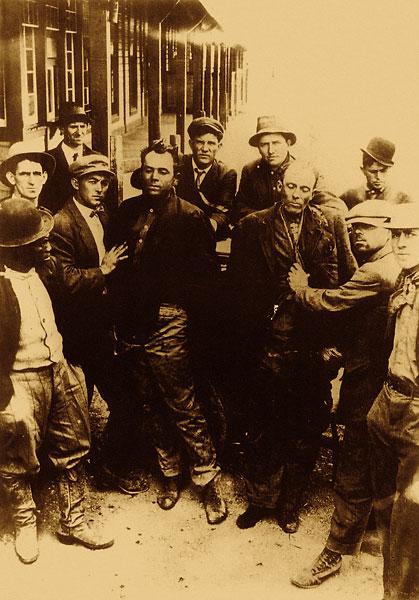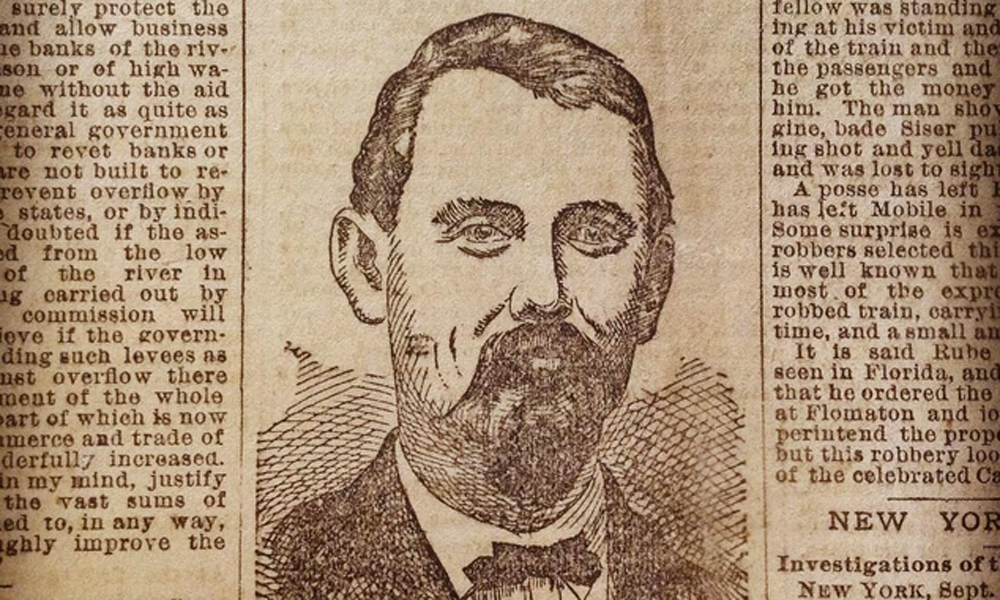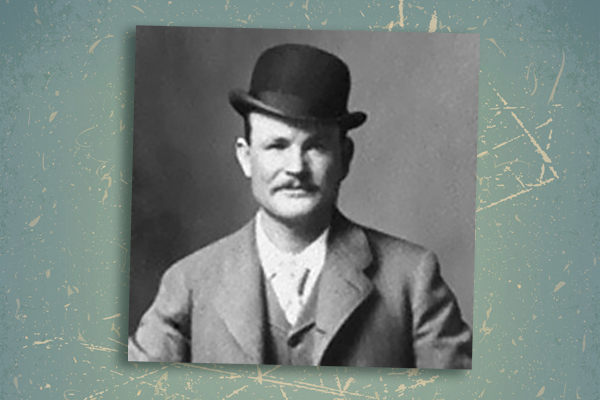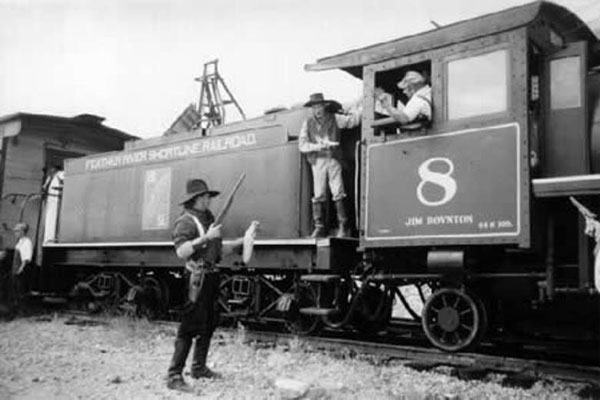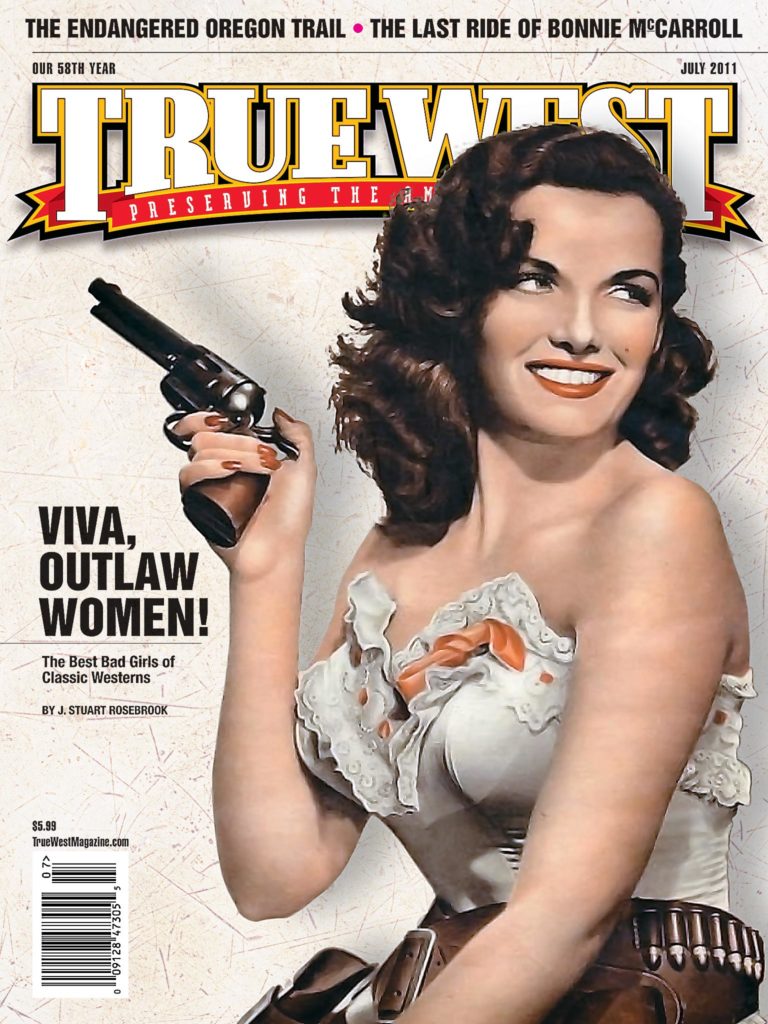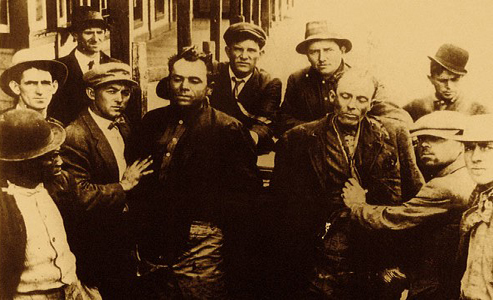 Just after midnight on March 13, 1912, on a lonely stretch of tracks in southwest Texas, a train sat silently in the darkness.
Just after midnight on March 13, 1912, on a lonely stretch of tracks in southwest Texas, a train sat silently in the darkness.
Looking for ill-begotten gains, a hooded robber had his gun trained on three employees of the Galveston, Harrisburg & San Antonio Railway.
One of them, a pint-sized Wells Fargo messenger David Trousdale, pointed out a package of loot to the robber. When the outlaw bent over to grab it, Trousdale pulled an ice mallet from under his coat and clobbered the badman three times in the head, killing him stone dead.
Then the three grabbed the outlaw’s Winchester and two pistols, waited for the second holdup man to show up and shot him too.
That bandit, Ole Hobeck, had met his partner in the federal pen in Atlanta. His mate had ridden with the Wild Bunch. He was in the famous Fort Worth Five photo with Butch Cassidy and the Sundance Kid, sitting a head taller than the other outlaws.
Known as the Tall Texan, Ben Kilpatrick had finished a 10-year stretch for robbery only a few months before. That stint hadn’t taught him any lessons. It just earned him a grave, shared with Hobeck, near the robbery site.
Now, Kilpatrick’s last robbery has inspired a documentary.
The man behind Last Train to Boothill is Arthur Soule. He was just six when he first saw Butch Cassidy and the Sundance Kid, a 1969 movie that did not mention Kilpatrick. As a teenager, Soule decided he wanted to know more about the Wild Bunch, choosing to focus on the Tall Texan. “I picked him because he was the last one—the last train robber, the last outlaw [of the Wild Bunch],” he says. “And it didn’t seem like anybody had much on him.”
In 1981, Soule—still a teenager—headed to Terrell County in Texas, the site of the train robbery, where he dug up documents and more. “I also met with some people who had actually seen Ben Kilpatrick when he got out of jail, before his last train robbery…some relatives, some old-timers,” Soule says.
These folks provided a wealth of information. For example, Kilpatrick loved fine clothes. He was well read. And he was a top marksman, once shooting the heads off chickens for sport.
The bandit could be charming, but Soule says that masked a dark side: “Kilpatrick was a sociopath. The only thing he was concerned with was himself. Everyone who was available he would use to his ends.”
Those he manipulated included fellow outlaws, friends, girlfriend Laura Bullion, even his mother and other family members. Perhaps that is why the Kilpatrick clan didn’t seek revenge on Trousdale–—too many bridges burned.
After 14 years, Soule published 200 copies of his book The Tall Texan: The Story of Ben Kilpatrick. He hopes Last Train to Boothill will reach a larger audience. The 40-minute production weaves in modern and historical photos as a narrator tells the story of the deadly train robbery. Soule plans to distribute the film through Amazon.com’s Instant Video and Hulu.com’s On Demand. He also wants to show the work at film festivals.
As you watch it, you may wonder how an experienced outlaw like Kilpatrick could die in such a bizarre fashion?
“First off, David Trousdale had a sense of responsibility toward his job and his employer,” Soule explains. “He believed it was his duty to protect the train shipments. That was pretty common back then.
“But Kilpatrick probably got a little too cocky. He thought he didn’t have to worry about the men within his immediate reach.”
An ice mallet to the head proved that theory wrong.
Photo Gallery
The postmortem photo of bandits Ben Kilpatrick and Ole Hobeck; on the far left is Wells Fargo messenger David Trousdale holding up Kilpatrick’s body.
– True West Archives –


